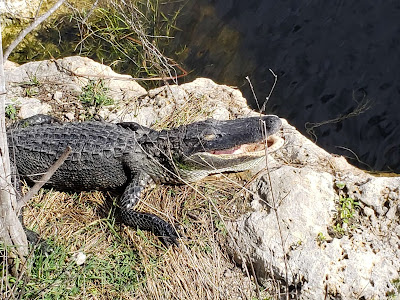Nearby town: Chesterton, IN; Nearby metro: Chicago, IL
"The Dunes are to the Midwest what Grand Canyon is to Arizona and Yosemite is to California. They constitute a signature of time and eternity. Once lost, the loss would be irrevocable."
- poet Carl Sandburg, from a 1958 letter he wrote to Illinois Senator Paul H. Douglas
At the south end of Lake Michigan rises a series of dunes that is home to a unique and vibrant ecosystem. Only a few miles away from the bustling Chicago metropolis, the Indiana Dunes are a beloved local landmark. The Dunes recently became the state of Indiana's sole National Park.
The movement to preserve these Dunes began back at the turn of the 20th century when botanist Henry Chandler Cowles published a popular tract on the unique local flora of the Dunes. There was concern that the rapid industrialization of cities like Gary, Portage, and Chesterton would destroy the Dunes. In 1916, legendary NPS director Stephen Mather held hearings in Chicago on a potential "Sand Dunes National Park." A National Park was ultimately not designated at that time, but the effort spurred the creation of Indiana Dunes State Park in 1926. In the 1950s, plans began to expand the Port of Indiana to maximize economic development. This industrial growth led to a local effort to preserve the area dubbed the Save The Dunes Council. The Council successfully lobbied Congress and negotiations with the Port of Indiana led to the creation of Indiana Dunes National Lakeshore in 1966.
The Lakeshore was re-designated as Indiana Dunes National Park in 2017. Today, the National Park lies next to the Indiana Dunes State Park (which continues to be managed by the State entity) and also alongside the Port of Indiana. The Dunes are an incredible conservation success story. Yes, you'll see the signs of industry as you walk along the coast, but the efforts have also preserved the unique ecosystem of these Dunes for generations to come. Indiana Dunes is one of the rare National Parks that lies in an urban setting. Because of this, some National Park enthusiasts question whether a place like the Dunes "deserves" designation as a National Park. However, I believe it absolutely does. It is important that we protect and preserve urban greenspaces - along with remote wilderness - for future generations.
Both the National Park and the State Park are worth a visit (but bear in mind that there are separate entrance fees to visit both parks). Let's begin with the National Park. Our stay started at Porter Beach.
With the expansive views, you'll have to remind yourself that you're looking at a lake, not the ocean. 😃 We took a pleasant stroll along the shore, played in the sand dunes, and watched the setting sun.
You can learn about the early settlers of the area at the Chellberg Farm and the Bailly Homestead. The Chellbergs, Swedish immigrants, farmed in this area in the 1870s and 1880s. The Bailly family was one of the first families to settle in the area when they built a fur trading post in 1822. The Bailly family was laid to rest in an impressive and unique cemetery. Take a walk between the two structures and also head to the Bailly Cemetery for a nice 1.5-2 mile stroll through the heavily wooded area.
Chellberg Barn
Chellberg homestead. Tara loved the porch.
Bailly cemetery
Bailly Homestead
The next day we went to West Beach. We took the mile-long Dune Succession Trail loop. This loop gives a great showcase of this unique ecosystem. We then played at the beach and went swimming. The water was a bit cold, but not too bad. Be aware of possible rip currents. We had a blast swimming in the waves of Lake Michigan. West Beach was our favorite spot at this National Park.
It was a clear day...so we could see the Chicago skyline across the Lake.
the Port of Indiana
Our next stop was Kemil Beach and the "1933 Century of Progress Homes." These homes were featured in the 1933 World's Fair in Chicago as examples of ultra-modern and progressive architecture. It's a fun stop.
Our last stop was Mount Baldy on the eastern edge of the Park. At 126 ft, Mount Baldy is the tallest dune in the Park boundaries. It is a "living" or wandering dune that moves and shifts every year (right now the dune is threatening to take over the beach access parking lot). In 2013, a small boy fell into a void-space anomaly inside the dune and it took over three hours to rescue the boy from the 11 ft pit that opened up under his feet. It was determined that as the dune moves it sometimes buries trees. The trees then decompose and leave hollow cylindrical shafts hidden underneath the sand. Since the 2013 incident, the trail to the top of the dune has been closed. The dune is simply too unstable. You can still get up close to the dune on a ranger-led tour. The beach is also open.
the steep slopes of Mt. Baldy. The dune moves throughout the year and sometimes subsumes trees.
I'll admit we weren't expecting much from the Indiana Dunes when we first planned this trip...but we were pleasantly surprised. We had a great time in one of our country's newest National Parks. For more info:
https://www.nps.gov/indu/index.htm
BONUS: make sure to stop at the State Park. The State Park is home to Indiana's most popular day hike: The 3 Dune Challenge. The 1.5-mile loop trail summits Mt. Jackson (176 ft), Mt. Holden (184 ft), and Mt. Tom (192 ft). It doesn't sound too difficult...but it is actually quite challenging. Trudging up a dune is exhausting. Thankfully, it had rained the night before, and it made the sand a little more firm and easier to hike up. Enjoy the great views and feel proud for conquering Indiana's most strenuous hike. 😀

























































































































































